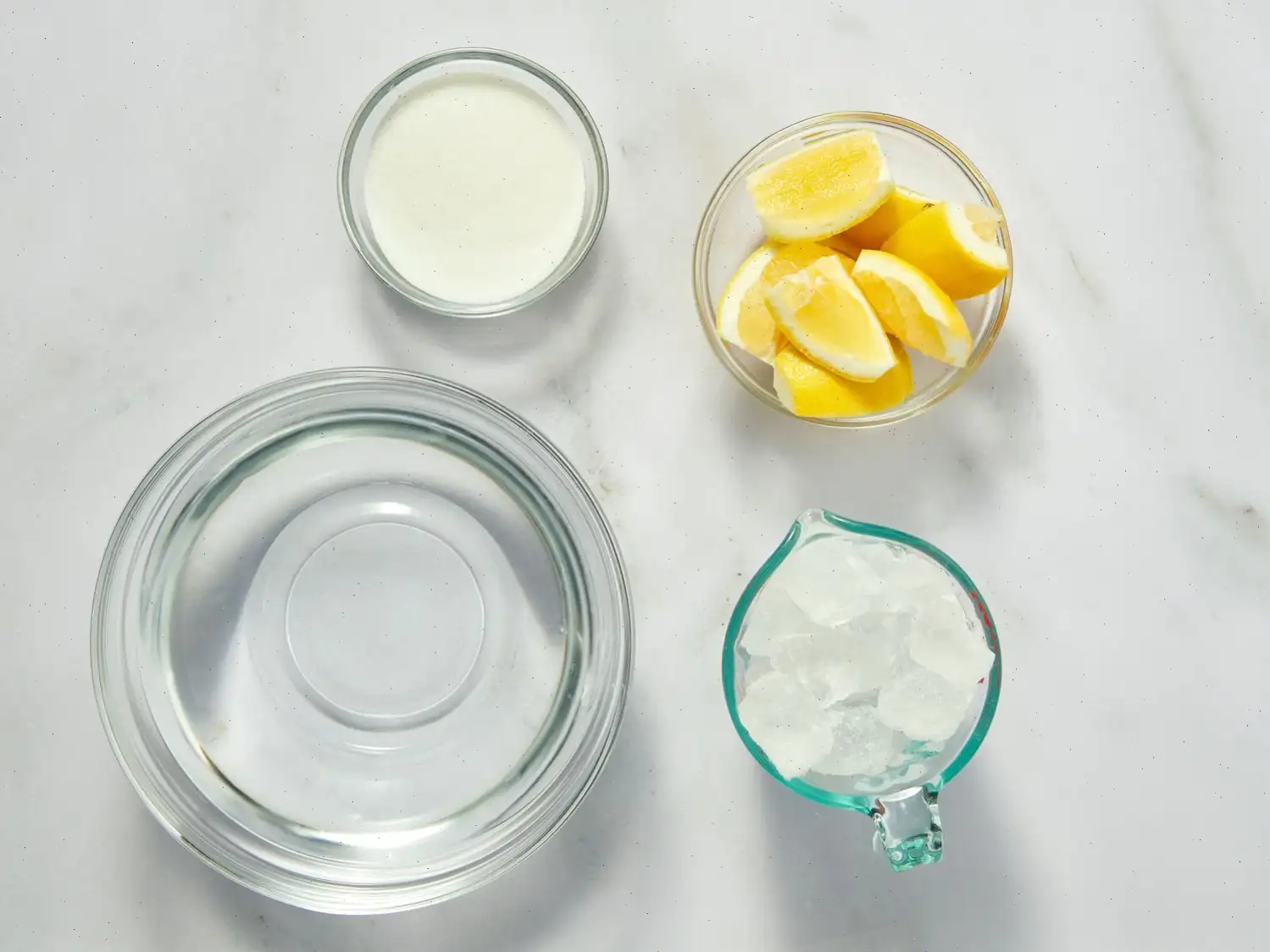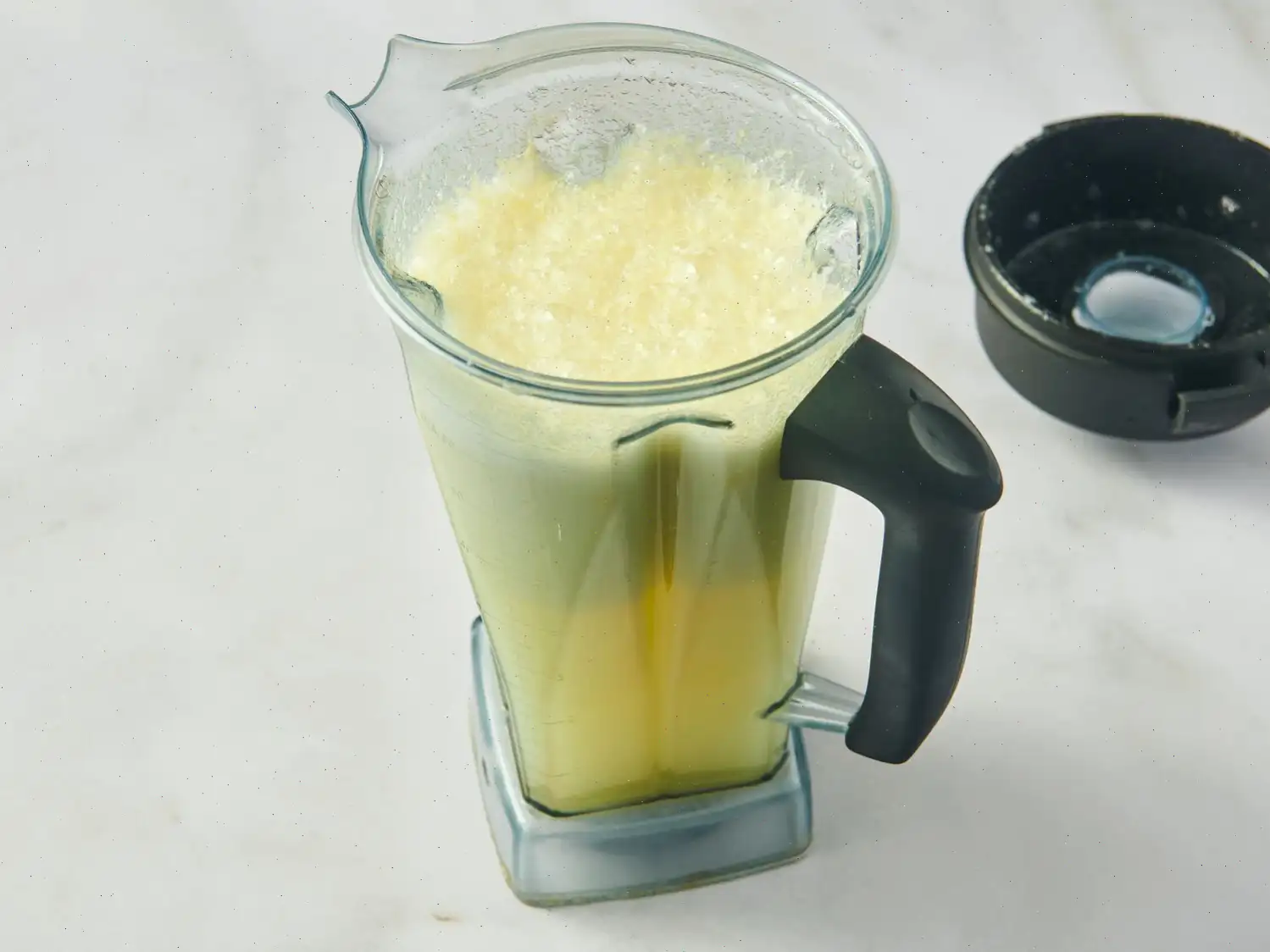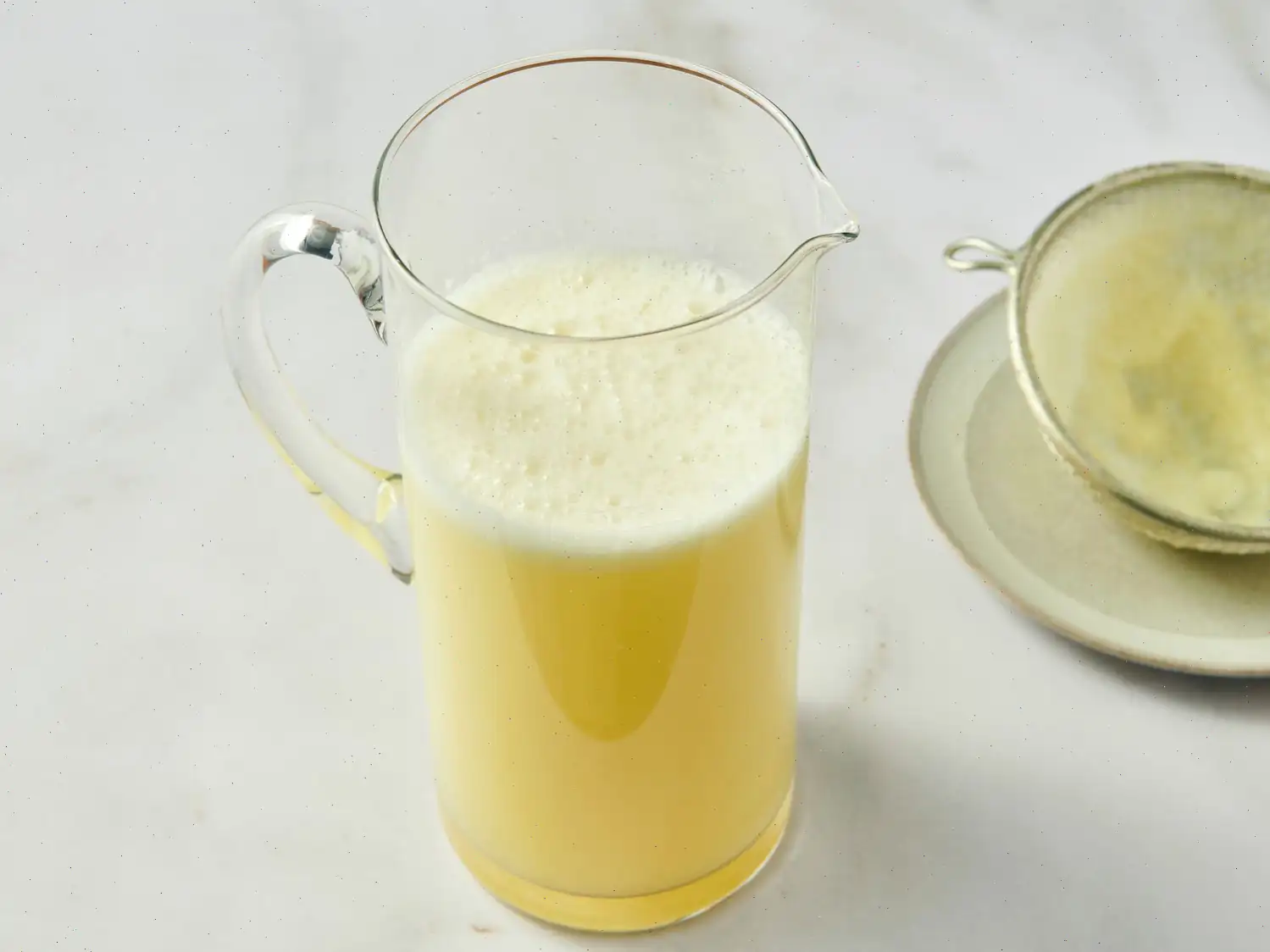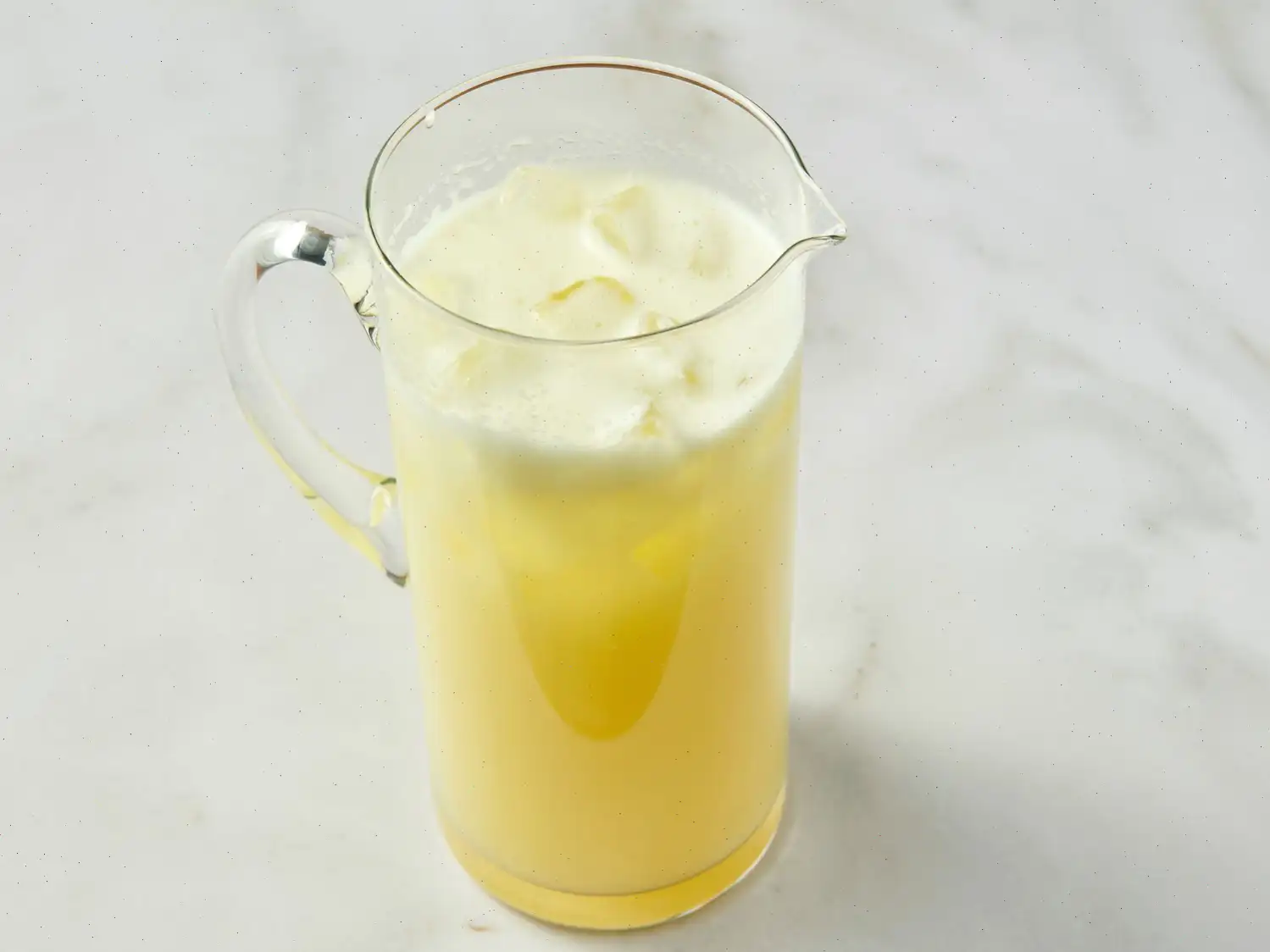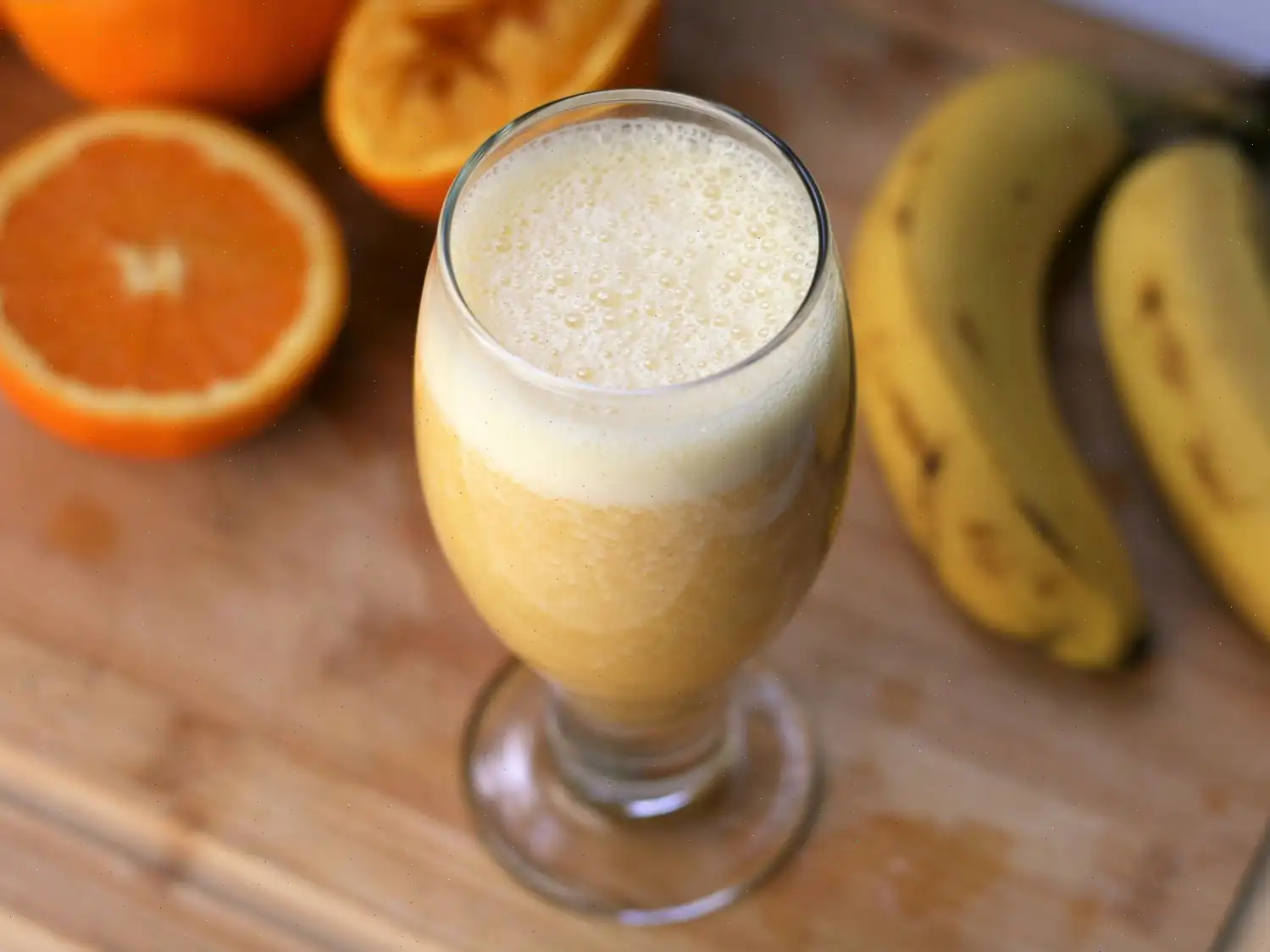
Whole Lemon Lemonade Recipe
Ingredients
This refreshing lemonade recipe was created to serve 6 people. Ingredient amounts are automatically adjustable, but cooking times and preparation steps should be followed as written for best results.
- 2 organic lemons, quartered and seeds removed
- 6 cups cold water, divided
- 3/4 cup granulated sugar
- 2 cups ice cubes
Directions
- Prepare all ingredients, ensuring lemons are washed, quartered, and seeded.
- Place the lemon quarters, sugar, and 4 cups of cold water into a blender. Blend on high speed for 1-2 minutes until the mixture is completely smooth.
- Strain the blended mixture through a fine mesh sieve into a large pitcher, discarding the solids.
- Add the ice cubes and the remaining 2 cups of cold water. Stir well to combine.
- Serve immediately over extra ice if desired. Enjoy your homemade lemonade!
Nutrition Facts
| Servings Per Recipe | 6 |
|---|---|
| Calories | 161 |
| Total Fat | 0g (1% DV) |
| Saturated Fat | 0g (0% DV) |
| Cholesterol | 0mg (0% DV) |
| Sodium | 16mg (1% DV) |
| Total Carbohydrate | 44g (16% DV) |
| Dietary Fiber | 4g (15% DV) |
| Total Sugars | 33g |
| Protein | 2g (3% DV) |
| Vitamin C | 83mg (93% DV) |
| Calcium | 48mg (4% DV) |
| Iron | 1mg (5% DV) |
| Potassium | 276mg (6% DV) |
* Percent Daily Values are based on a 2,000 calorie diet. Your daily values may be higher or lower depending on your calorie needs. ** Nutrient information may vary depending on ingredients. If following a medically restrictive diet, consult a healthcare professional before consuming.
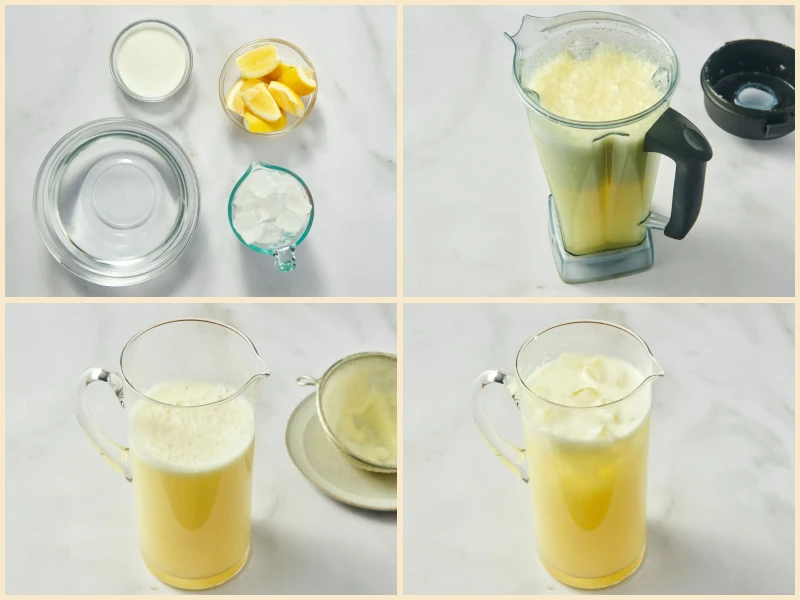
The Story Behind Whole Lemon Lemonade
Whole Lemon Lemonade is a modern twist on a centuries-old beverage. Traditional lemonade, often made from squeezed lemon juice, sugar, and water, has been enjoyed since at least the 17th century in Europe and the Middle East. The idea of using the entire lemon, peel included, originated as a way to capture a fuller spectrum of flavors while maximizing nutritional benefits. By blending the whole fruit, the drink retains not only the tangy juice but also the aromatic oils and subtle bitterness from the peel, creating a complex, refreshing taste profile that has quickly gained popularity in home kitchens and cafes alike.
Regional Variations and Influences
This lemonade style has found unique adaptations across different regions. In the United States, especially in health-conscious communities, the whole lemon method is celebrated for its fiber content and vitamin C boost. In Mediterranean countries, similar beverages often include additional herbs like mint or rosemary, enhancing both flavor and aroma. Meanwhile, in Japan, whole citrus drinks may incorporate yuzu or sudachi, resulting in a more fragrant and slightly floral variant. Each region embraces local citrus varieties, influencing the color, tartness, and sweetness of the final drink.
What Sets It Apart from Similar Drinks
Unlike classic lemonade or limeades, which rely solely on juice, Whole Lemon Lemonade uses the entire lemon blended into a smooth liquid. This technique produces a richer texture and a more complex flavor profile that balances sourness with subtle bitterness from the peel. Compared to lemon-infused water, which merely hints at lemon flavor, this drink is bold and assertive. Additionally, the inclusion of the peel introduces natural pectin, slightly thickening the lemonade and giving it a more satisfying mouthfeel.
Where Its Typically Served
Whole Lemon Lemonade is versatile and appears in many settings. At home, it is a popular summer refreshment, often served over ice in tall glasses. Cafes and juice bars favor it as a health-forward alternative to traditional soft drinks. At social gatherings and outdoor events, its vibrant color and fragrant aroma make it an eye-catching centerpiece. Some restaurants even serve it with garnishes like lemon slices, fresh herbs, or sparkling water to elevate presentation and taste.
Interesting Facts About Whole Lemon Lemonade
- Using the whole lemon increases dietary fiber, contributing to better digestion compared to regular lemonade.
- The peel contains essential oils with antioxidant properties, which may provide subtle health benefits.
- Despite its rich flavor, this lemonade is surprisingly low in calories if sweetened moderately.
- Blending the entire fruit reduces waste, making it an eco-friendly choice for sustainable kitchens.
- The method is simple enough for children to participate, promoting healthy beverage habits from a young age.


